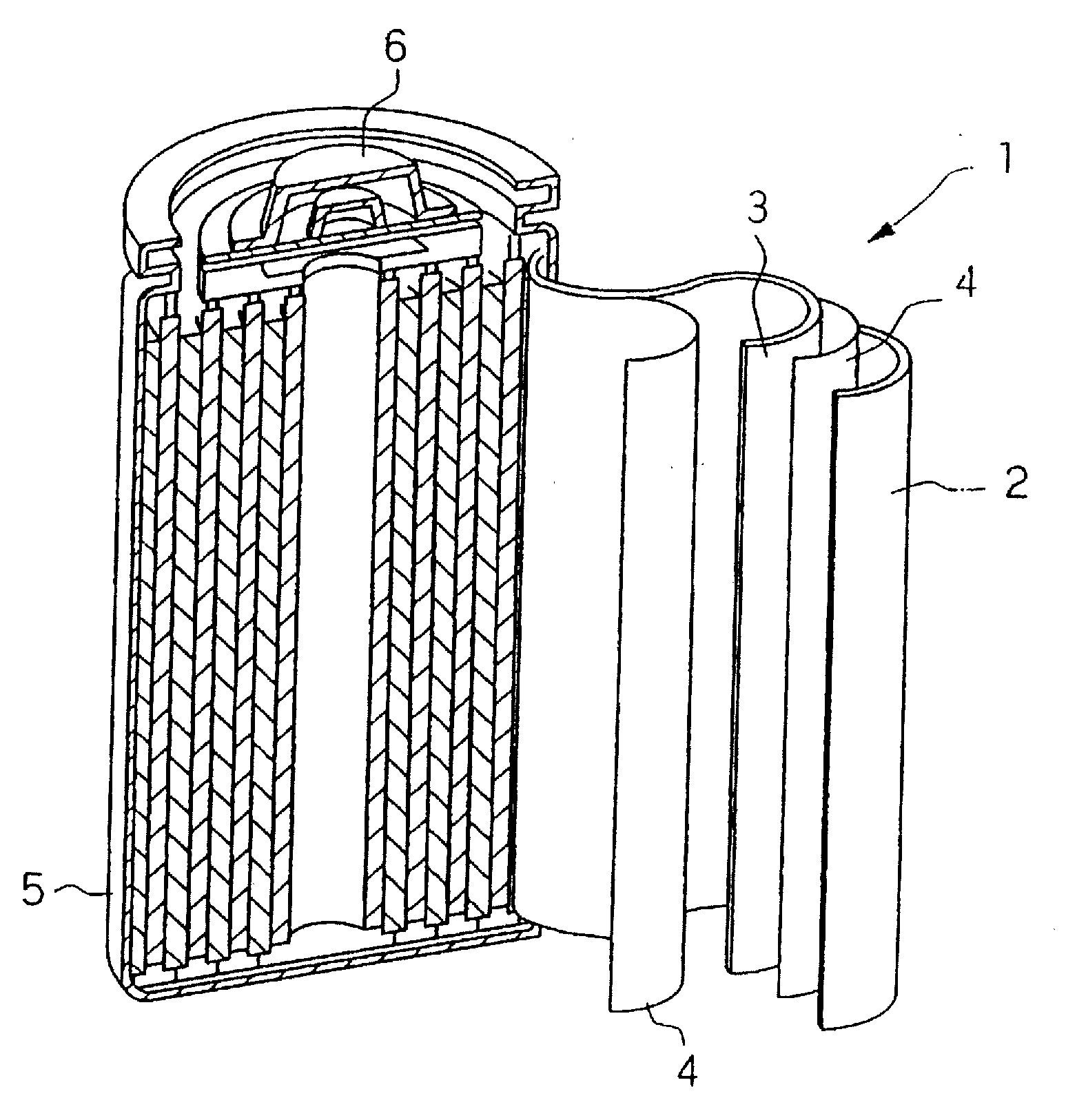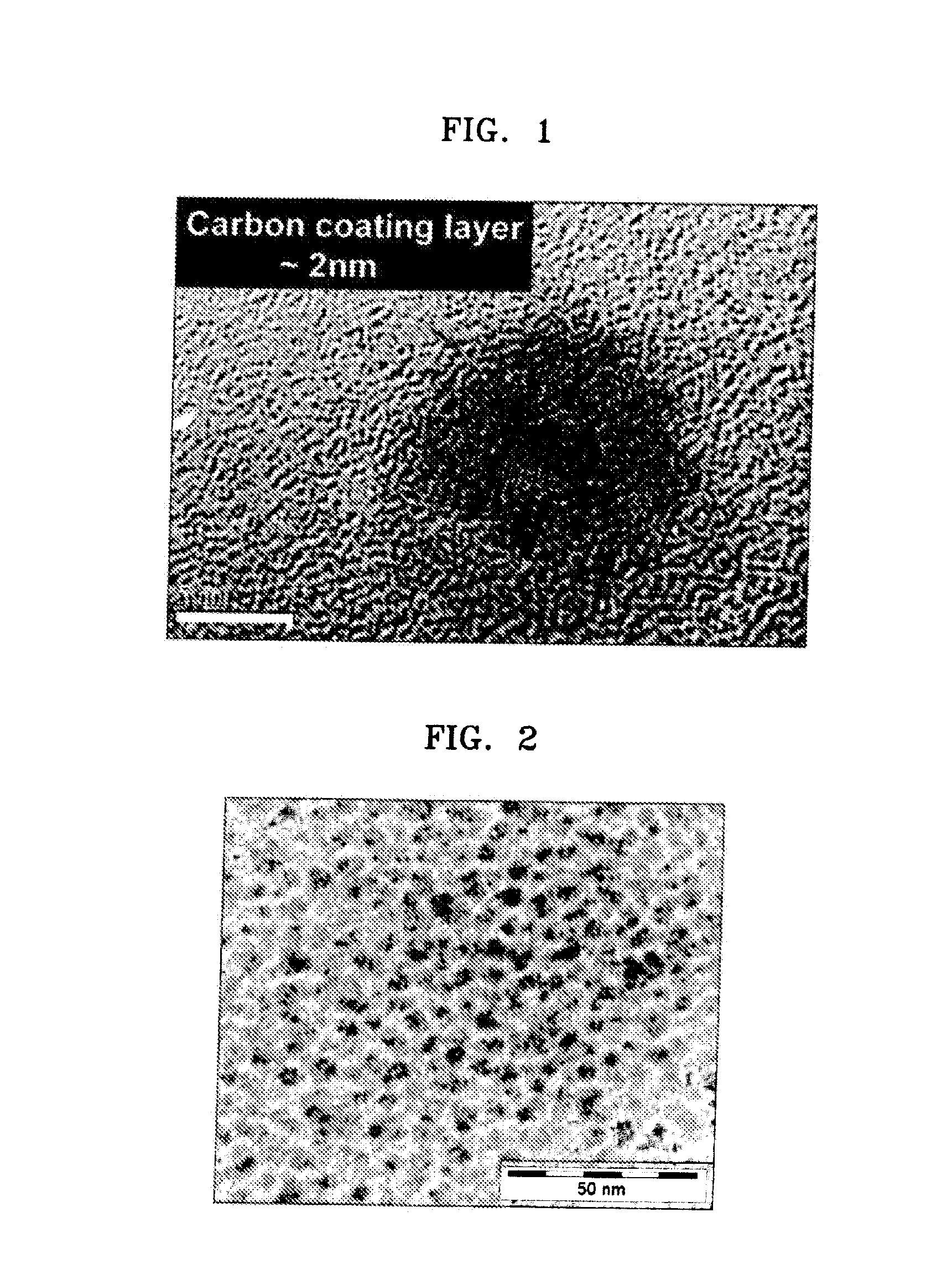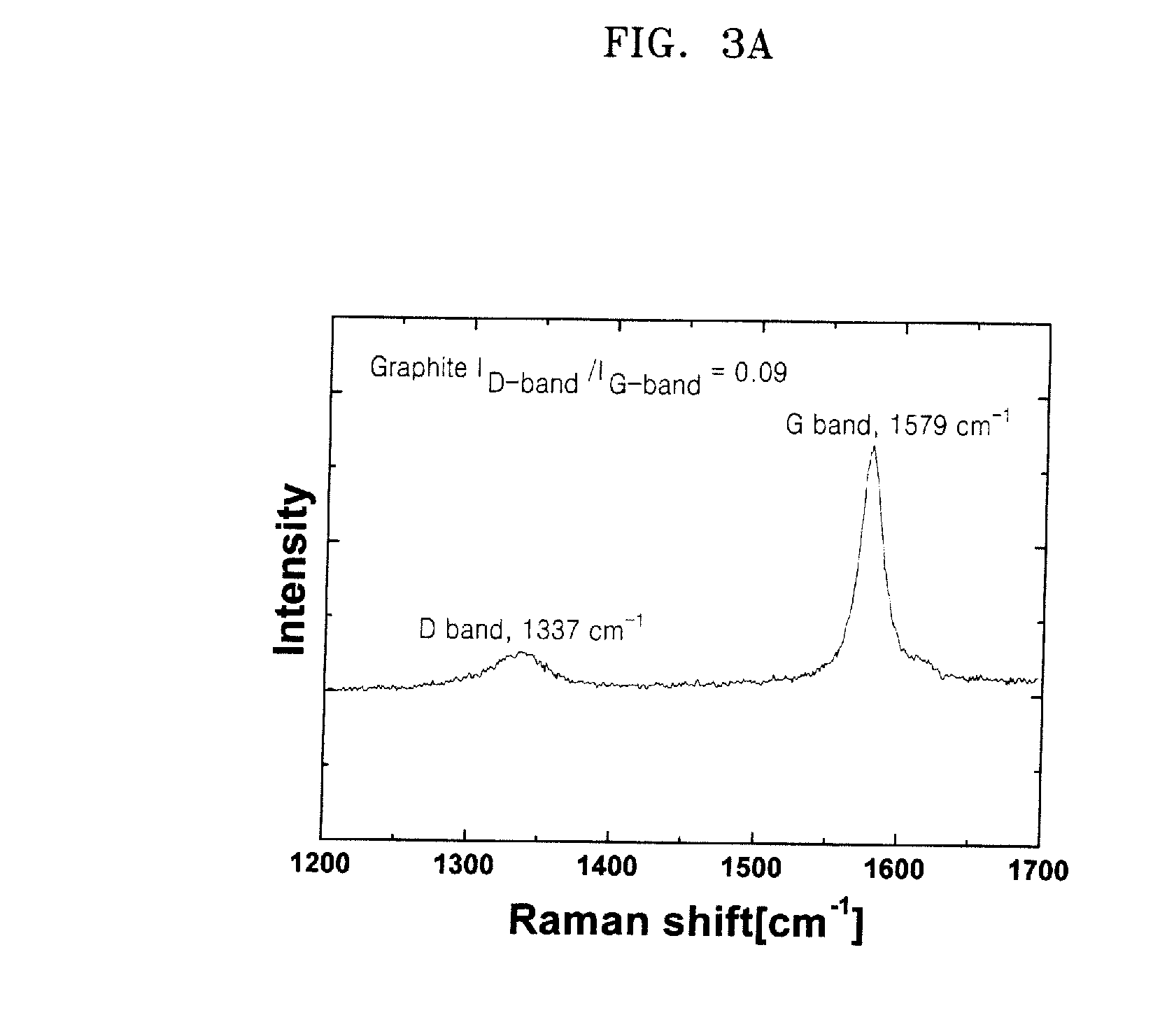Negative active material including metal nanocrystal composite, method of preparing the same, and anode and lithium battery including the negative active material
a technology of metal nanocrystals and composite materials, which is applied in the field of negative active materials, methods of preparing the same, and anodes and lithium batteries including the negative active materials, can solve the problems of reducing the charging/discharging efficiency, short circuit between the anode and the cathode, and lithium dendrites can form at the surface, so as to improve the capacity retention capacity, reduce the formation of cracks, and improve the effect of charge/discharge capacity capacity
- Summary
- Abstract
- Description
- Claims
- Application Information
AI Technical Summary
Benefits of technology
Problems solved by technology
Method used
Image
Examples
example 1
[0092]4.6 g of SiCl4 was dissolved in 50 ml of ethylene glycol dimethyl ether to form a first solution, and the first solution was stirred. A second solution of sodium naphthalenide dissolved in ethylene glycol dimethyl ether was prepared by adding 5.4 g of sodium and 19.38 g of naphthalene to 100 ml of ethylene glycol dimethyl ether, and the second solution was stirred all night. The second solution was quickly added to the first solution using a cannula while the first solution was stirring. As a result, a black dispersion solution was obtained. The black dispersion solution was stirred for 30 minutes. Then, 60 ml of butyllithium was added to the black dispersion solution, thereby quickly obtaining an amber-colored solution including a white precipitate. Subsequently, the solvent and naphthalene were removed from the amber-colored solution by placing the solution in a heated tank and using a rotary evaporator under reduced pressure. A light yellow solid was obtained as a result. T...
example 2
[0094]A metal nanocrystal composite powder was prepared as in Example 1, except that the sintering temperature was 900° C. instead of 700° C.
example 3
[0095]A metal nanocrystal composite powder was prepared as in Example 1, except that the sintering temperature was 1000° C. instead of 700° C.
PUM
| Property | Measurement | Unit |
|---|---|---|
| particle diameter | aaaaa | aaaaa |
| particle diameter | aaaaa | aaaaa |
| particle diameter | aaaaa | aaaaa |
Abstract
Description
Claims
Application Information
 Login to View More
Login to View More - R&D
- Intellectual Property
- Life Sciences
- Materials
- Tech Scout
- Unparalleled Data Quality
- Higher Quality Content
- 60% Fewer Hallucinations
Browse by: Latest US Patents, China's latest patents, Technical Efficacy Thesaurus, Application Domain, Technology Topic, Popular Technical Reports.
© 2025 PatSnap. All rights reserved.Legal|Privacy policy|Modern Slavery Act Transparency Statement|Sitemap|About US| Contact US: help@patsnap.com



